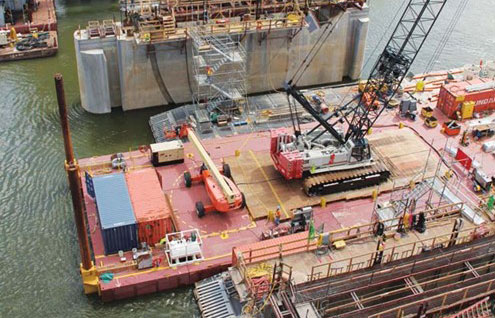Progress on a final Water Resources Development Act (WRDA) bill has slowed, but there have been advances on resolving some of the most contentious issues and a compromise bill should be wrapped up in the next month or so.
That’s the prediction of several key players on a joint House-Senate conference committee that has been working since Nov. 20 to finalize legislation that would make the first major reforms in the nation’s waterways policies since 2007.
“We’re still working on it. It’s taking longer that we had thought,” Rep. Bob Gibbs, R-Ohio, told the annual meeting of the Waterways Council on Feb. 11 in Washington, D.C. “ I am optimistic it will get done, just not as fast as we had hoped.”
Gibbs, who is chair of the House Water Resources and Environment Subcommittee, said that he and other House leaders are committed to get WRDA back on track with authorizations every two years. It has been six years since the last WRDA was passed.
The conference committee is reconciling two versions of WRDA, which would set new policies on how the federal government funds and manages the nation’s rivers and waterways infrastructure. Among other things, it would change the cost-sharing formula now used to fund the Olmsted Locks and Dam project in Illinois that is far over-budget and behind schedule.
The Inland Waterways Trust Fund (IWTF), which pays half the cost of new construction of locks and dams with a tax on diesel fuel paid by the barge industry, has little money left to spend on other projects because the fund’s dollars have been going to Olmsted.
The Senate version of WRDA abandons the current 50-50 funding split, and directs Uncle Sam to pay 100 percent of Olmsted’s costs, while the House bill sets a 75 percent federal, 25 percent IWTF cost share. A formula change would make more IWTF money available for other inland infrastructure projects.
Gibbs predicted that the final bill “would fall in between 75 percent and 100 percent.”
A panel of key congressional staffers said there is general agreement in both bills on other issues affecting the inland waterways. “These won’t be major hurdles in conference,” said Stephen Martinko, deputy staff director, House Transportation and Infrastructure Committee.
The sticky point is over so-called “contingent authorizations,” which involve whether projects in WRDA should be authorized on the contingency that they will receive favorable Army Corps of Engineers’ reports by a specified future date.
A proposed increase in the fuel tax, which the barge industry supports as a way to replenish the IWTF, is not part of this bill. It will have to be considered by the House Ways and Means Committee.
Speaking about the ups and downs of the budgets for the Corps, Major Gen. John Peabody, deputy commanding general for civil and emergency operations, said his agency’s budget over the past several years has been essentially “flatlined,” which has not allowed for more than just maintaining the nation’s aging inland infrastructure.
“We are now an operations and maintenance agency, not a construction agency,” he said.
The U.S. lags behind many other countries with its poor investment in ports and waterways, Peabody said. Brazil, for example, plans to invest $27 billion in its ports. “This probably won’t happen [given the country’s current economic situation], but that is their vision.”
By contrast, the U.S. spends only one-third of what Brazil invests, Peabody said.
“We are being bypassed by the rest of the world and we won’t be the greatest nation unless we act. We can’t keep going as we’ve been going.”




